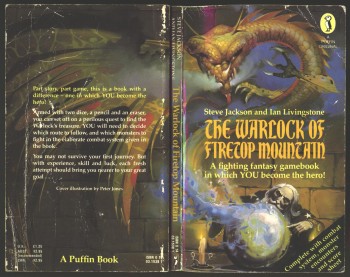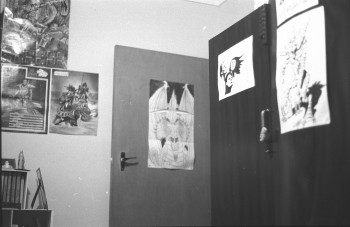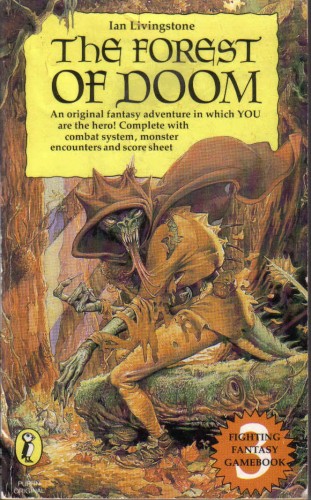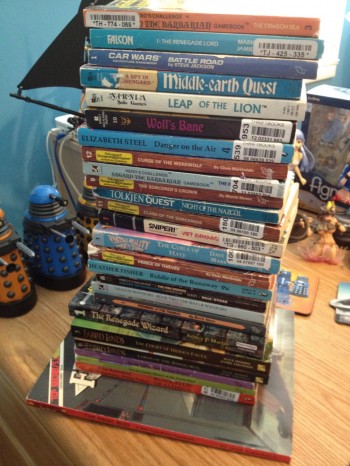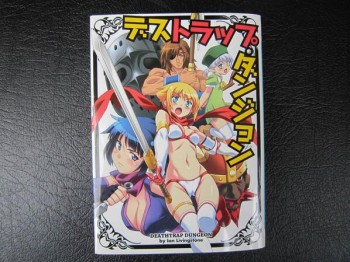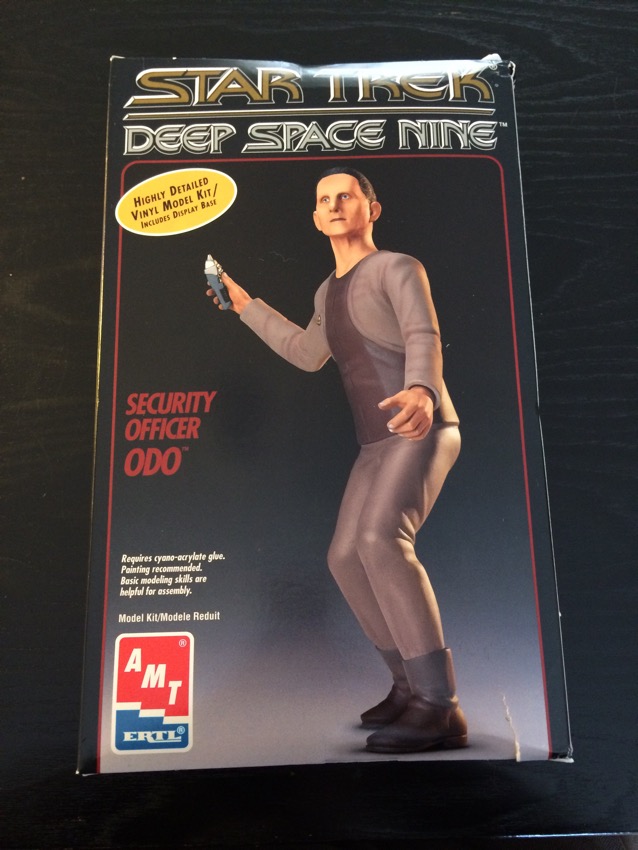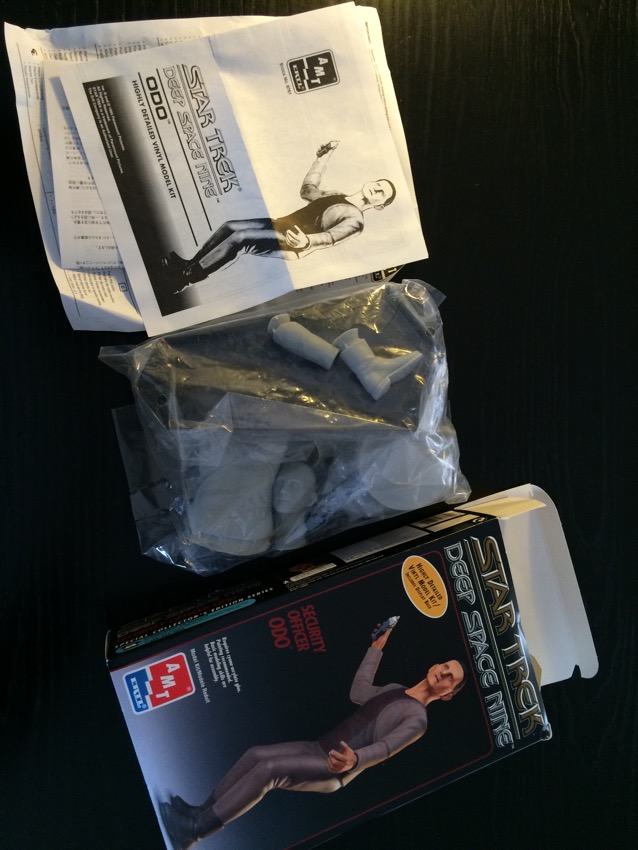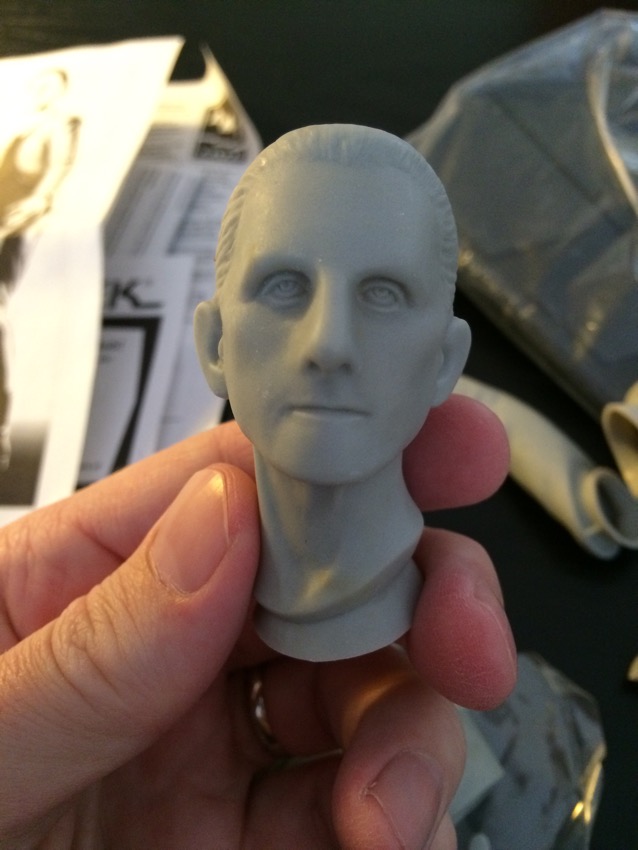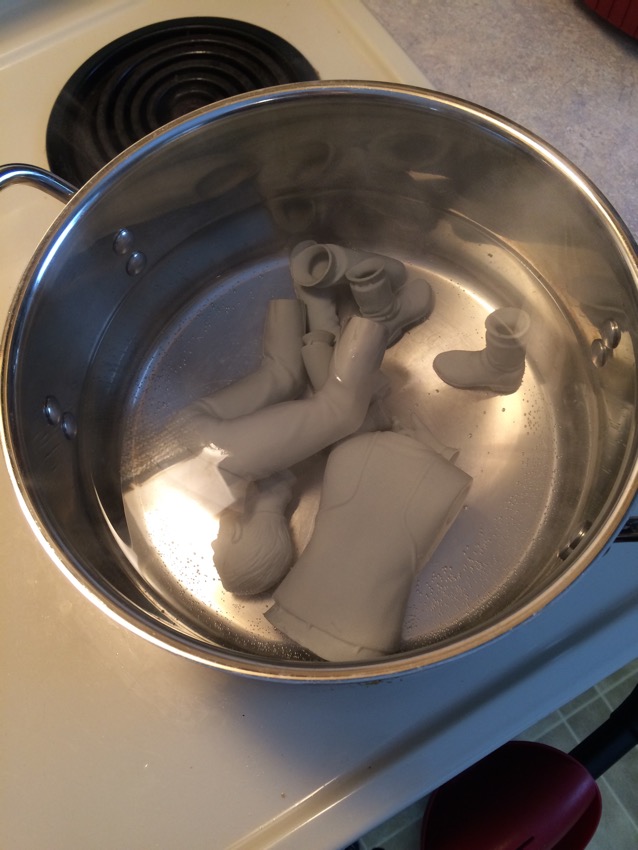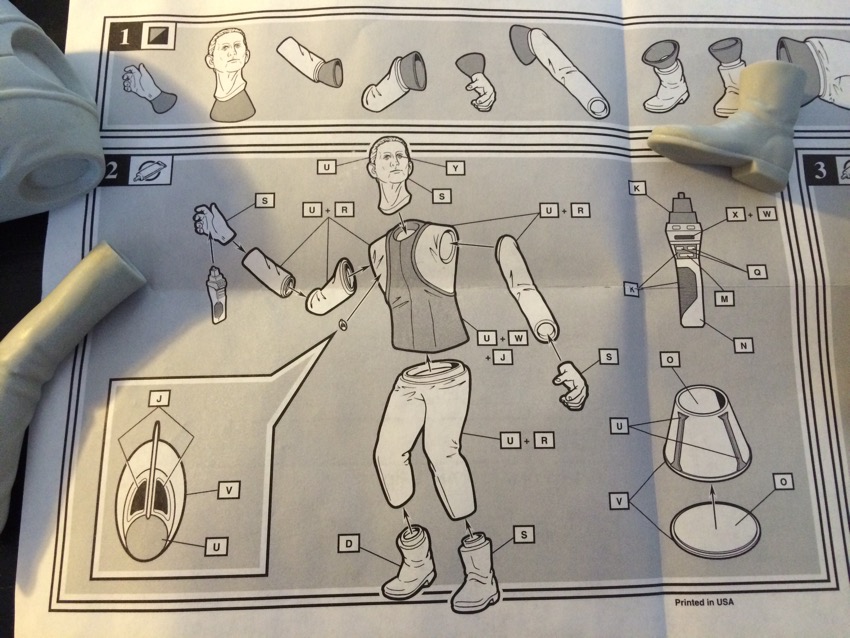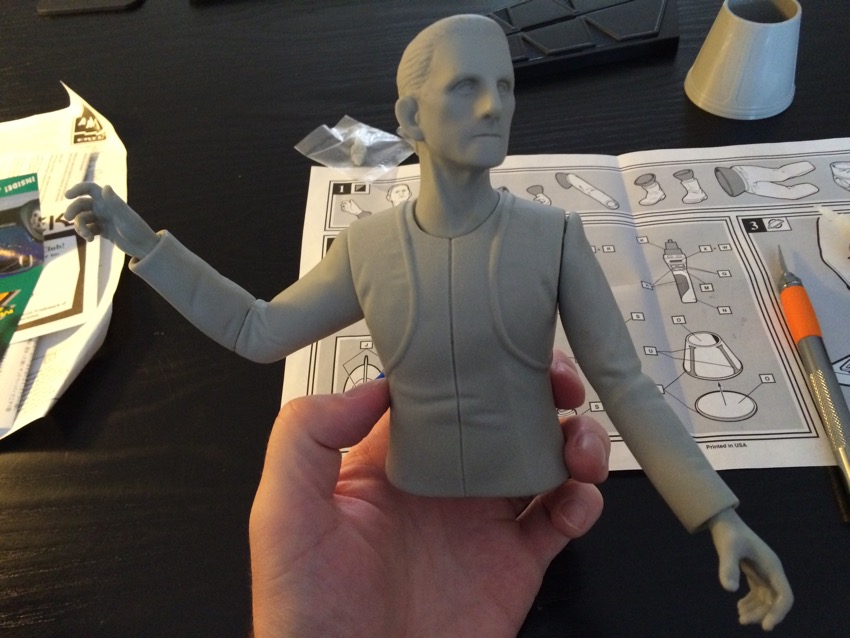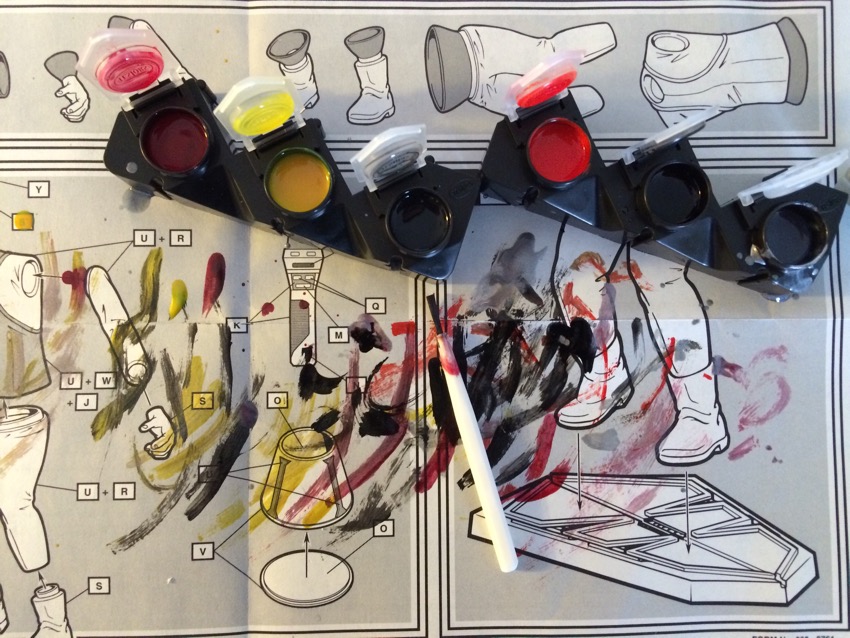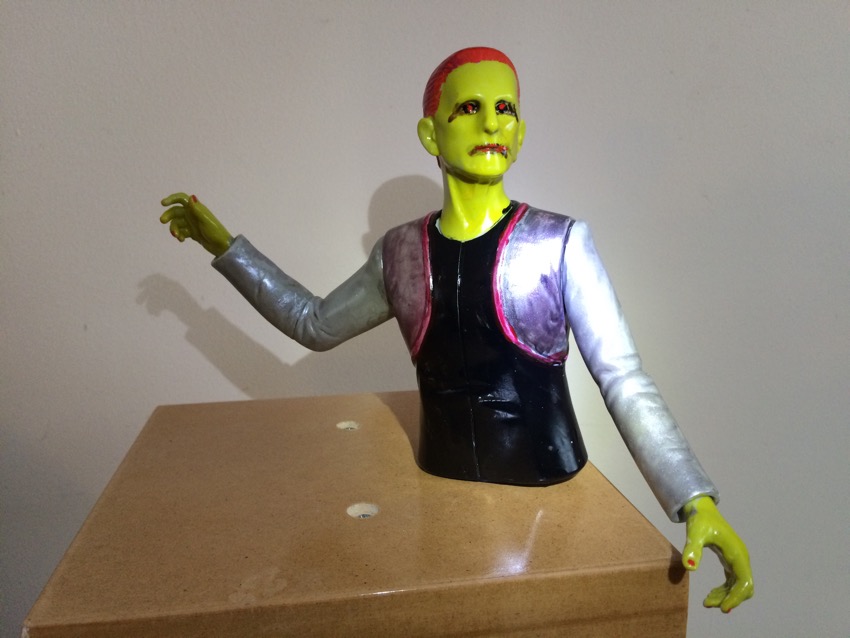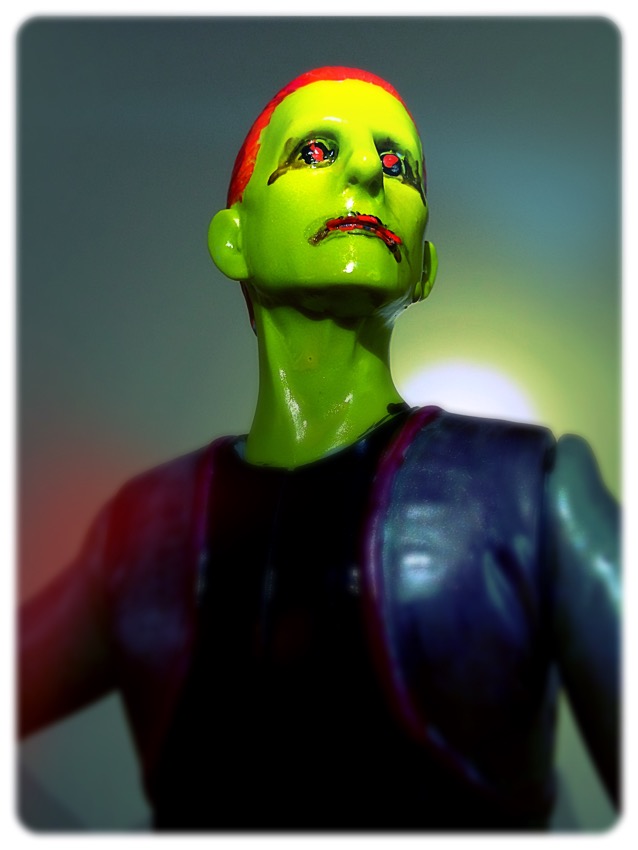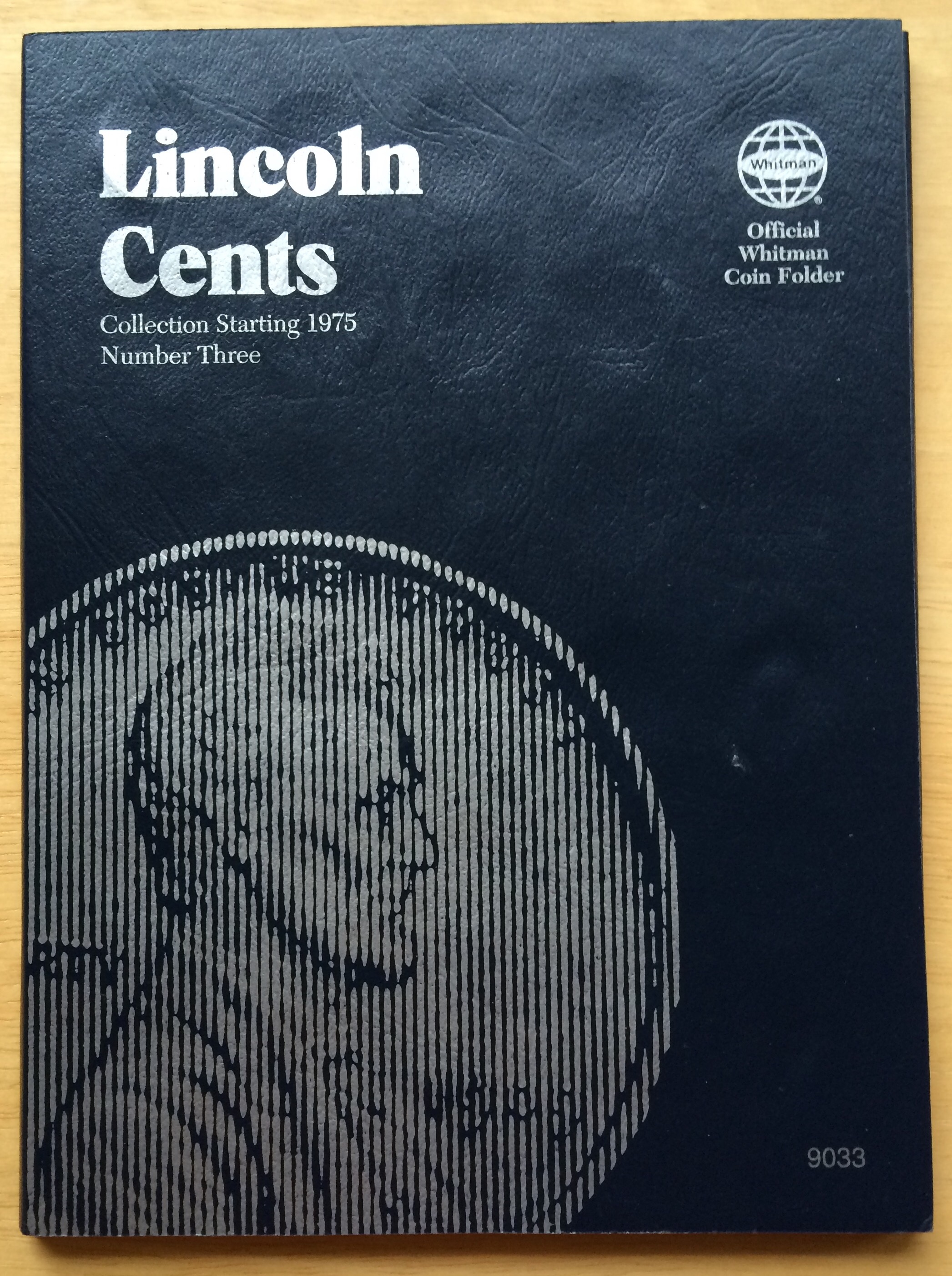I’ve read a few blog posts about gamebook collecting in recent months, and thought it was time to make my own.
What’s a gamebook? It’s a solo RPG adventure in book form. Tradaitionally gamebooks are distinct from ‘choose your own adventures’ in that they have some sort of system associated with them (usually keeping track of statistics and items, or rolling dice), but strict classification isn’t easy to do and the lines blur here and then with particular books.
While not the very first gamebook, the genre can be traced back to this particular book, which came out way back in 1982:
I was 10 at the time, and bought my first book – the exact version picture above – via the scholastic book club at school. It changed my life!
All of a sudden I didn’t just have to read about fantasy adventures involving orcs and elves and demons and dragons, I could play them as well! I was too young at the time to know that the authors were entrenched in interests I would eventually adopt myself (not the least being Dungeons & Dragons), and merely got swept away by the magic of the book with it’s vivid descriptions of peril, chaos and heroism and the astonishing (to this day) artwork contained within. I must have read through the book dozens and dozens of times, and the joy I experienced was only surpassed by the discovery that there would be more books like it published soon afterward.
I eagerly bought every Fighting Fantasy (as the series was dubbed) book as they were released, initially via the school book club and soon thereafter (once gamebooks had become a phenomenon) in the bookstores. Other series began (Lone Wolf, Way Of The Tiger, Falcon etc.) and I bought them too. I quickly built up a sizeable collection and it became perhaps my biggest hobby. I even wrote two books of my own (sequels to Scorpion Swamp and Forest Of Doom), compiled a bestiary (prior to the publication of Out Of The Pit) and even copied the art to hang it on my wall:
The above was taken in 1987, when I was fifteen and still clearly still enjoying my gamebooks. I was quite proud of my collection and it was displayed prominently in my room. I even saved related miscellany, including the adverts in magazines, reviews in newspapers, related magazines (Warlock and Proteus) and even an iron-on patch I was given at a bookstore when I purchased a book once.
Then I ‘grew up’, life moved on (ie. girls were invented) and my gamebook hobby – as it did for many of my generation – took a back seat. By my first college years I still had my gamebooks but rarely purchased any new ones, and when I left Australia in ’93 I left them to my brother. Even then I didn’t consider selling them, because they were still an important (and very happy!) memory of my young adolescent years. I’m not 100% sure what happened to the collection. I know most of the Fighting Fantasy titles would move into AW’s care (where the collection remains to this day), but I don’t know what Bernard ever did with all the others.
Fast forward a few years. I moved to America, got married and a job and became immersed in video games (& video game collecting). But I never forgot about the gamebooks, and the memories were always good ones. When I first returned to Oz in 2000 I brought back two books with me (ironically Scorpion Swamp and Forest of Doom) that I purchased for a song at a used bookstore, and reading them – maybe 10 years since I last had – was just as much fun as it ever was. In those days the gamebook fad had died; no new books were being published (killed as they had been by video games and the passage of time) and even on the internet it was difficult to find much enthusiasm. It seemed they would live on in my memories only.
When next I returned to Australia (in 2006), things had changed quite a bit. A British publisher (Wizard books) had purchased the rights to Fighting Fantasy books and had started republishing a few years prior. I was quite excited by this, and purchased many on that trip. In addition, when in Newcastle on that trip I bought every single gamebook (from any series) I found in used bookstores, including doubles of some. Upon returning to Sydney, I gave AW almost all of them as a gift, keeping only the doubles for myself (and of course the new imprints of FF books). I may not have realized it at that moment, but this was the start of my modern collection.
Within a few months of arriving back in America I had started buying books online, mostly (in those days) via ebay. I started with Fighting Fantasy books, and my goal was initially just the titles I had never read/owned but quickly became to build a full set of all books. This was still several years prior to the gamebook renaissance, and I was able to get books at astonishing prices (such as Night Dragon for only $3!). I remember watching auctions of lots of books – in which I only needed one or two – go buy with only my bid and winning for much less than I was prepared to pay. Those were fun days, and within only a few months I had close to a full collection of the Fighting Fantasy series. Some books remained elusive though, and it would take almost 8 years to complete the collection, by which point I had numerous imprints of many of the books including (almost) the entire US series.
I’d been well-and-truly bitten by the gamebook bug though, and long before finishing my FF collection I started on the other series. I dove in headfirst, and agressively hunted down the books from other major series such as Lone Wolf, Falcon, Skyfall, Grailquest and Golden Dragon. I discovered Demian’s webpage and it became sort of a shopping list for me. I was buying books on ebay and amazon mostly from overseas (Canada, England and Australia), and still trawling the used shops in Australia on my annual visits (I returned with 36 books in January 2011).
My collection continued to grow. By this time many of you knew about it, and I was helped significantly by Adam (who gave me many books, including returning the ones I’d given him in ’06), Bernard (who dug deep and bought me a few missing and expensive titles) and Florence (who astonished me with this graduation gift). It was getting harder and harder to find books I didn’t have, and my ‘recent aquisition’ piles tended to include more and more obscure series:
So we come to today. You can view my entire collection here. I don’t know how many there are – over 300 at last count – and the website I created (to assist me when I am traveling) isn’t even complete (since it doesn’t list duplicates or all FF imprints I own). I’m still actively buying books to fill in the blanks in my collection, and have even started buying the reprints of old series being published by Morris and Thompson. The collection is physically quite large now, long having outgrown the full-sized bookshelf once dedicated to it. I really need to sort it at all and work out how to store it better…
To pre-empt questions from those that may read this:
Q: Do you read them all?
A: Yes – and no. I have played through every FF book and most of the books from other landmark series, but I haven’t yet played all Lone Wolf books, or every book from every series. However there isn’t a series I haven’t played at least one (if not more) books from, including the standalone gamebooks.
Q: What are your favourites?
A: You can’t go wrong with Fighting Fantasy titles, especially the fantasy ones from earlier in the series (pre #30). If someone was only ever going to read one gamebook, I’d always recommend the grand-daddy of them all Warlock Of Firetop Mountain. That said the other series I would recommend are the Blood Sword books (which have a deservedly high reputation), the Virtual Reality (now called Critical IF) books, the (Lovecraftian) Forbidden Gateway series and the recent Destiny Quest series. But to be honest, I love all gamebooks, even the ‘bad’ ones 🙂
Q: What about Choose Your Own Adventures?
A: You can’t spend a decade buying gamebooks online or in used bookstores without eventually picking up some titles that blur the line between gamebook and choose-your-own-adventure. You’ll see on my website I have a few, and there are others I didn’t bother listing. Typically I find the traditional choose-your-own-adventure titles to be too childish for my interests, but some books that use the mechanic (notable Life’s Lottery by Kim Newman) are every bit as entertaining as a ‘real book’.
Q: What’s the most you’ve paid for a book?
A: Not much, maybe $20 at the very most, probably less. As I said above, I bought most of the books that are now very pricey long before people started collecting again in earnest, and got them for a song. I feel sorry for those that want to obtain something like an original Knights Of Doom or Deathmoor today). I know some of the gaps in my collection could easily be filled with a single click on amazon or ebay, but I’m not going to pay big $$$ for a book just to own it (yet).
Q: What are your most-wanted gamebooks that you don’t yet have?
A: In no particular order, these are the five that have eluded me but I haven’t yet given up on:
– Trial Of Champions (original US imprint)
– Sorcery box set with spellbook (I consider myself owning it ‘in spirit’ since AW has the one I bought years ago)
– Blood Sword #5 (prohibitively expensive; may be reissued soon)
– high number Lone Wolf books (again, prohibitively expensive)
– Citadel Of Chaos (US Wizard reissue, early 2000s. Jonathan Green mentions it’s existence in You Are The Hero, but does it actually exist?)
But the true Holy Grail would be a foreign imprint book. There’s hundreds of thousands of them out there – Warlock was published in dozens of languages – but I’ve never found one. I’ve particularly like a Japanese version, and have invested some time checking used shops and hobby stores during my many trips to that country (all to no avail). One day this may be mine:
(Incidentally I do own the English language – and some JP imprints – of the Queen’s Blade books, as well as a number of Lost World gamebooks. I should probably add them to the website…)
Well that’s enough for a history. The collection is old and quite complete, but I consider it active and ever-growing. If you’ve got any questions add them in the comments, or via twitter if that’s what got you here.
And may your stamina never fail 😉
